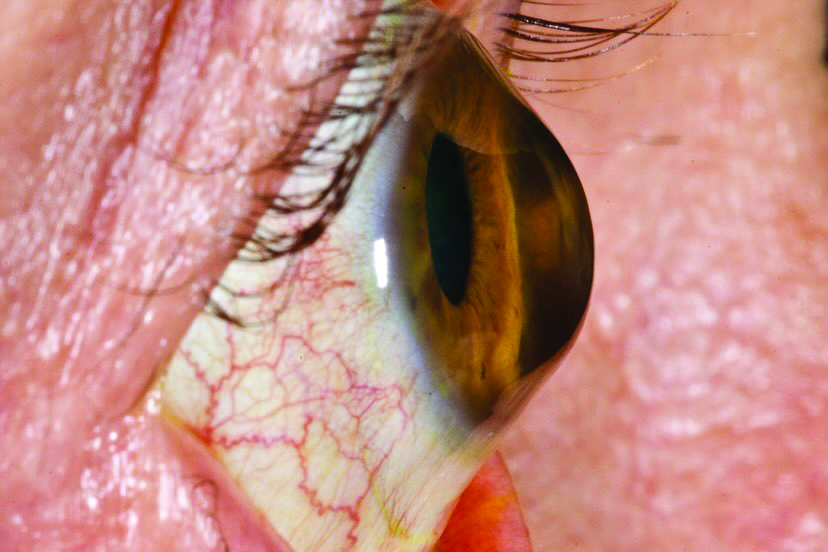 |
| Patients who have a family member with keratoconus should be screened for the disease prior to undergoing refractive surgery, study suggests. Photo: Irving Martínez Navé, OD. Click image to enlarge. |
Though the pathogenesis of keratoconus (KCN) is not entirely understood, research has suggested that in addition to multiple environmental factors, genetics may play a role in its incidence. A positive family history of KCN is present in an estimated 6% to 8% of patients with the disease, and studies have found correlations between KCN and several inheritable disorders including Down syndrome, Leber’s amaurosis and connective tissue disease.
Undiagnosed KCN could pose a threat to patients who plan to undergo keratorefractive procedures by increasing their risk of developing postoperative keratectasia and other complications. Relatives of KCN patients are more likely to have undetected KCN, particularly those with subclinical disease accompanied by only subtle signs or symptoms.
The presence of higher-order aberrations (HOAs) is one clinical sign that’s significantly more common and severe in KCN patients. For that reason, researchers recently compared HOAs in first-degree relatives of KCN patients with a group of controls. They made the following two conclusions from the data: a high prevalence of undiagnosed KCN susceptibility can be found in family members of KCN patients, and, therefore, comprehensive preoperative examinations should be performed in these individuals to detect subtle topographic changes and HOAs.
The prospective comparative study included 210 eyes from 105 family members of 28 patients with KCN and 210 normal eyes of 105 controls. Each patient underwent unilateral corneal topography, tomography and aberrometry, which were then compared between the two groups.
KCN was detected and diagnosed in 13.3% of the first-degree relatives of patients with the disease, 71.5% of whom were male (diagnosis was determined via slit lamp examination, TMS-4 videokeratoscope and Orbscan IIz analysis). The researchers noted, “Tomographic indices and irregularity indices in 3mm and 5mm zones in Orbscan were significantly higher in the relative group.” They added that other irregularity indices of TMS-4 topography that were significantly higher in family members of patients with KCN included surface regularity index, surface asymmetry index, difference sector index, standard deviation of corneal power and irregular astigmatism index.
“The most prevalent topographic pattern in the control group was the symmetric bowtie (57.1%) and in the relative group was the asymmetric bowtie (39.5%),” the study authors observed. “In addition, significantly thinnest corneal pachymetry was detected in the relative group. Root mean square of all HOAs including vertical trefoil, vertical coma, horizontal coma, horizontal trefoil, quadrifoil and fourth-order spherical aberrations were significantly greater in the relative group than controls.”
The researchers concluded that asking patients about family history of KCN and conducting appropriate screening prior to performing keratorefractive procedures is crucial, as even subtle topographic abnormalities have clinical importance as a contraindication to surgery.
Namdari M, Eslampour A, Zarei-Ghanavati S. Evaluation of ocular higher-order aberrations in first-degree relatives of patients with keratoconus. Cornea. May 13, 2022. [Epub ahead of print]. |

